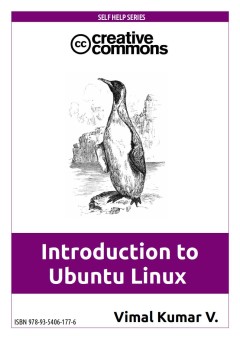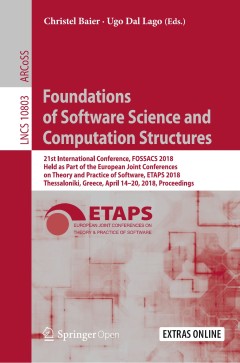Filter by

Human computer confluence. Transforming human experience through symbiotic te…
Human-computer confluence refers to an invisible, implicit, embodied or even implanted interaction between humans and system components. New classes of user interfaces are emerging that make use of several sensors and are able to adapt their physical properties to the current situational context of users.A key aspect of human-computer confluence is its potential for transforming human experienc…
- Edition
- -
- ISBN/ISSN
- 9783110471137
- Collation
- 330 p.; 22 cm.
- Series Title
- -
- Call Number
- 302.30285 HUM h

The Psychology of social networking Vol. 2. Identity and relationships in onl…
Using a novel approach to consider the available literature and research, this book focuses on the psychology of social media based on the assumption that the experience of being in a social media has an impact on both our identity and social relationships. In order to ‘be online’, an individual has to create an online presence – they have to share information about themselves online. Thi…
- Edition
- -
- ISBN/ISSN
- 9783110473858
- Collation
- 246 p.; 23 cm.
- Series Title
- -
- Call Number
- 302.30285 RIV p

Introduction to ubuntu linux
Introduction to Ubuntu Linux is a user guide that suits newbies. This book based on Ubuntu 20.04 LTS. It includes information on the evolution of Linux-based operating systems, Ubuntu flavours, Ubuntu basics, installation of Ubuntu, and basic commands. This book gives the step-by-step instructions with clear explanations that demystify Ubuntu Linux. This book is for persons with little or no…
- Edition
- -
- ISBN/ISSN
- 9789354061776
- Collation
- 75p. : ill.
- Series Title
- -
- Call Number
- 005.432 KUM i

Clinical text mining : secondary use of electronic patient records
This open access book describes the results of natural language processing and machine learning methods applied to clinical text from electronic patient records. It is divided into twelve chapters. Chapters 1-4 discuss the history and background of the original paper-based patient records, their purpose, and how they are written and structured. These initial chapters do not require any techn…
- Edition
- -
- ISBN/ISSN
- 9783319785035
- Collation
- xvii, 181p. : ill.
- Series Title
- -
- Call Number
- 006.312 DAL c

Computation and the humanities: towards an oral history of digital humanities
This book addresses the application of computing to cultural heritage and the discipline of Digital Humanities that formed around it. Digital Humanities research is transforming how the Human record can be transmitted, shaped, understood, questioned and imagined and it has been ongoing for more than 70 years. However, we have no comprehensive histories of its research trajectory or its discipli…
- Edition
- -
- ISBN/ISSN
- 9783319201696
- Collation
- 285 p.; 22 cm.
- Series Title
- Springer Series on Cultural Computing
- Call Number
- 384.648 NYH c

Brain-computer interface systems - recent progress and future prospects
Brain-Computer Interface (BCI) systems allow communication based on a direct electronic interface which conveys messages and commands directly from the human brain to a computer. In the recent years, attention to this new area of research and the number of publications discussing different paradigms, methods, signal processing algorithms, and applications have been increased dramatically. The o…
- Edition
- -
- ISBN/ISSN
- 9789535111344
- Collation
- 280 p.; 22 cm.
- Series Title
- -
- Call Number
- 004.072 BRA b

Holography, research and technologies
Holography has recently become a field of much interest because of the many new applications implemented by various holographic techniques. This book is a collection of 22 excellent chapters written by various experts, and it covers various aspects of holography. The chapters of the book are organized in six sections, starting with theory, continuing with materials, techniques, applications as …
- Edition
- -
- ISBN/ISSN
- 9789533072272
- Collation
- 468 p.; 22 cm.
- Series Title
- -
- Call Number
- 621.072 HOL h

Optical communication technology
The optical world is continuously and rapidly evolving, and new challenges arise every day. As a result of these rapid changes, the need for up-to-date texts that address this growing field from an interdisciplinary perspective persists. This book presents an overview of new optical communication technologies and a bird's-eye view of some of the more promising technologies among them. The book …
- Edition
- -
- ISBN/ISSN
- 9789535134176
- Collation
- 184 p.; 22 cm.
- Series Title
- -
- Call Number
- 001.4 OPT o

Foundations of software science and computation structures : 21st Internation…
This book constitutes the proceedings of the 21st International Conference on Foundations of Software Science and Computational Structures, FOSSACS 2018, which took place in Thessaloniki, Greece, in April 2018, held as part of the European Joint Conference on Theory and Practice of Software, ETAPS 2018.The 31 papers presented in this volume were carefully reviewed and selected from 103 submissi…
- Edition
- -
- ISBN/ISSN
- 9783319893662
- Collation
- xv, 582p. : ill.
- Series Title
- -
- Call Number
- 005.1 FOU f

The Huawei and Snowden questions : Can electronic equipment from untrusted ve…
This book answers two central questions: firstly, is it at all possible to verify electronic equipment procured from untrusted vendors? Secondly, can I build trust into my products in such a way that I support verification by untrusting customers? In separate chapters the book takes readers through the state of the art in fields of computer science that can shed light on these questions. In a …
- Edition
- -
- ISBN/ISSN
- 9783319749501
- Collation
- xiv, 116p. : ill.
- Series Title
- -
- Call Number
- 005.8 LYS h
 Computer Science, Information & General Works
Computer Science, Information & General Works  Philosophy & Psychology
Philosophy & Psychology  Religion
Religion  Social Sciences
Social Sciences  Language
Language  Pure Science
Pure Science  Applied Sciences
Applied Sciences  Art & Recreation
Art & Recreation  Literature
Literature  History & Geography
History & Geography